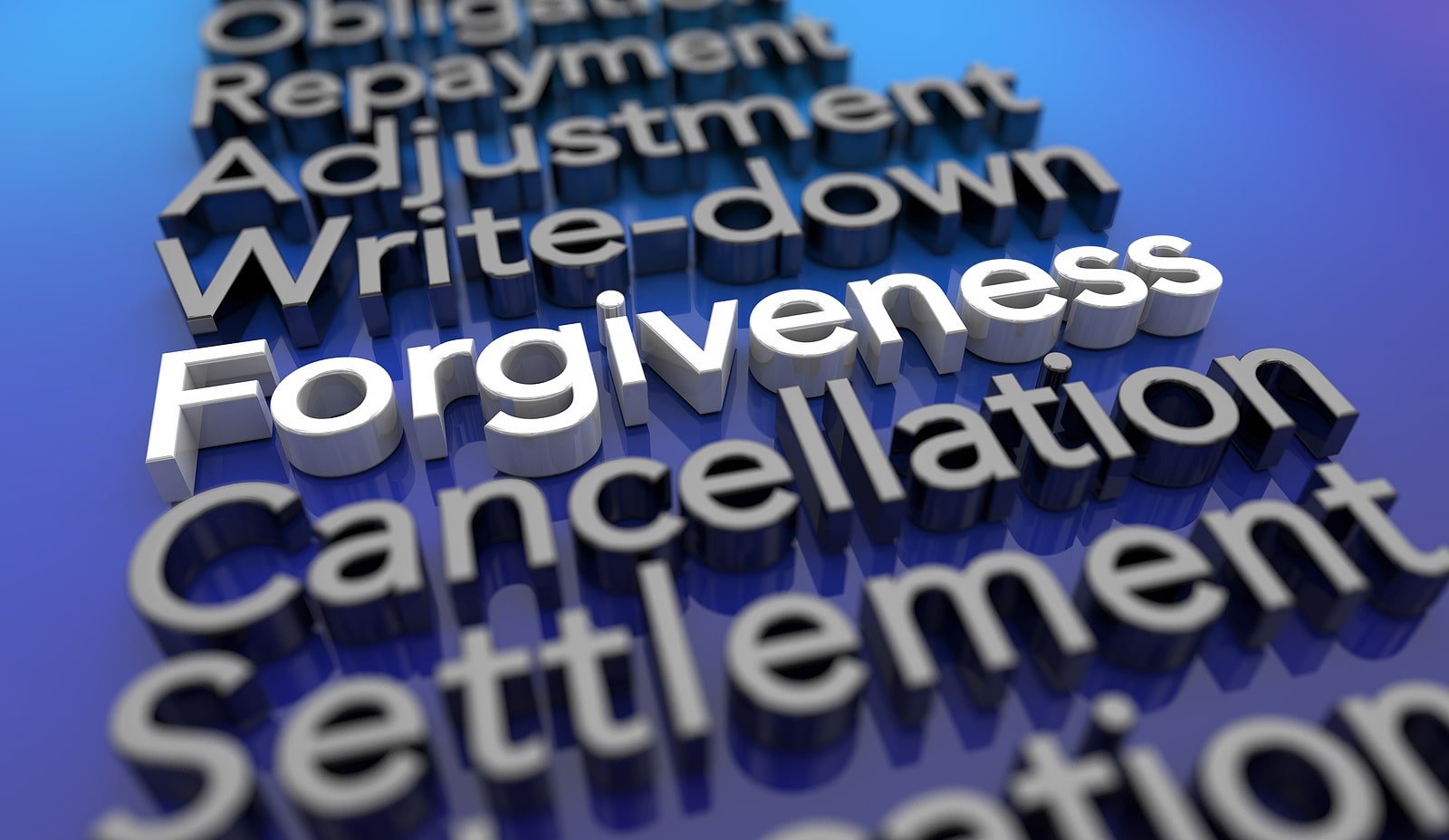President Joe Biden has announced his long-awaited student loan forgiveness plan, bringing financial relief to more than 43 million people who owe college debt.
But there are a lot of details to the plan and many individuals have questions about who qualifies and what is required to cancel student loan debt. I have already received a lot of queries on social media about this, and for good reason.
We have nearly $1.768 trillion in student loans outstanding in America. And college debt holds a lot of people back from doing everything from getting married to buying a house.
So, here are The Money Coach’s answers to 15 key questions about Biden’s student debt plan.
I’m also sharing my insights into what is known so far about the new student loan cancellation program, how you can get loan forgiveness, the surprising ways that past and future generations of college students will benefit, and what’s NOT included in the Biden plan.
-
What student loans are eligible for loan cancellation?
President Biden’s new student loan forgiveness program applies only to federal student loans, including undergraduate and graduate student loans, Stafford loans, Parent PLUS loans, and some FFEL debt (Federal Family Education Loans).
-
Are any private loans getting canceled?
No. This program exclusively benefits those who owe federal student loans.
-
How much student loan debt can be forgiven?
Even though a lot of news headlines and media reports have described the loan cancellation program as wiping out $10,000 in student loans, the government plans to cancel up to $20,000 in federal student loans per borrower.
Here’s the key factor: people who received Pell Grants while in college will be eligible for that top amount of $20,000. Other borrowers who did not receive a Pell Grant when attending school qualify for $10,000 in loan forgiveness.
Overall, 60% of college borrowers received Pell Grants — so the majority of people benefiting from this plan will get $20,000, not $10,000. That should be the headline!
-
What’s a Pell Grant?
Pell Grants are free federal financial aid (not loans) provided to students with the greatest financial need. In general, Pell Grants have historically helped low-income, first-generation students and people of color who otherwise wouldn’t have been able to afford college at all.
It’s worth noting that students getting Pell Grants weren’t rolling in the dough with federal funds. It’s not like Pell Grants are even enough to cover the cost of college attendance, which now tops $25,000 on average for tuition, fees, room and board at public, four-year institutions.
Meanwhile, the maximum federal Pell Grant award for the 2022-2023 school year was $6,895, per the Department of Education. And the average Pell grant award is $4,491, a 2021 report from the Education Data Initiative shows.
Furthermore, 51% of Pell Grant funds go to students with household incomes under $20,000 a year.
-
How do I know if I received a Pell Grant?
You can find out the specific type of financial aid you received — and if a Pell Grant was ever awarded to you — by logging into your account at studentaid.gov.
-
Is there an income cap on who is eligible to receive this student loan forgiveness?
Yes. Student debt will be cancelled only for individuals with adjusted gross incomes (AGI) of less than $125,000 or for married couples with an AGI of less than $250,000. For all practical purposes, that means the vast majority of those with college loans – 43 million people out of the 45 million individuals holding student debt – will qualify for loan forgiveness.
Also, the Biden Administration says people can qualify for loan forgiveness if they meet the income requirements in either the 2020 or 2021 tax year.
-
So, who will benefit the most from this Biden plan?
A wide swath of people will benefit from this student loan cancellation.
Consider this: 72% of Black college graduates received Pell Grants, versus 34% of White grads and 36% of Asian grads. Also, 3.6 million parents owe Parent Plus loans, according to White House officials.
Additionally, 68% of Pell grant funds go to students who have enrolled in public universities – not elite private schools more often attended by student from affluent families.
Overall, an analysis from the Department of Education shows nearly 90% of relief dollars will go to people earning less than $75,000 annually.
So don’t believe any nonsense from critics who claim that this student loan cancellation supposedly mostly benefits the wealthy. That’s simply not true.
-
Didn’t Biden promise to do more, and specifically more to help the Black community?
Biden has received criticism from those who say the plan should have gone further, wiping out all college debt or putting an end to interest charges on federal loans. Others object to any student loan cancellation at all.
Personally, I would have preferred that if he was going to cancel student debt, he went big and did what Elizabeth Warren suggested, cancelling up to $50,000 worth of student loans.
Regardless, when the full impact of this plan starts to become clearer, I suspect a lot of people will be rejoicing at being fully or partially free from the burden of student loan debt.
I know many individuals within the African American community are already rejoicing at the news, with some crediting Vice President Kamala Harris for ensuring the inclusion of the Pell Grant provision as a way to give more substantial, targeted relief to economically help Black families and others.
-
What do I need to do to take advantage of this student loan forgiveness?
For some people, it’s actually not necessary to do anything in order to get your federal student loans cancelled. That’s because the federal government already has your income data and based on that info, they will automatically cancel the appropriate level of your student debt.
For most people, however, you will have to fill out a form with the U.S. Department of Education certifying that you qualify for student loan cancellation under the new income rules.
The form is not yet ready. The Education Department will offer more information about it in the weeks ahead, spelling out exactly where to go to fill out the form/application.
In the meantime, it’s a good idea to sign up for updates on when the application is open at the Department of Education’s subscriptions page.
Also, after you receive your loan cancellation, I would recommend that you later go back online to the Department of Education website and double-check that your balance has been reduced by the appropriate amount – either $20,000 or $10,000.
-
Can currently enrolled college students get their student loans cancelled too?
Yes. Students who are now taking classes at a college or university can get their past student loans cancelled too, as long as two conditions are met. First, the student’s parent or parents must earn less than the stated income qualification cap (either $125,000 for a single taxpayer/parent or $250,000 for two parents). Also, the student loan(s) had to have been originated prior to July 1, 2022, in order to qualify for loan cancellation.
In other words: if you (or your child) are presently in school, you can’t get a federal student loan now – as of this writing in late August 2022, or later – and then qualify to get loan cancellation for that new or recent college debt.
-
What about the student loan payment pause? Do I need to start paying student loans?
Biden has approved what he says will be the final extension of the student loan repayment pause. It was set to expire on August 31, 2022, but that the payment pause will now run through December 31, 2022. Therefore, anyone with federal student loans doesn’t have to make any payments for rest of 2022. Also, there is no interest being charged on those federal loans during the payment pause.
Depending on how much college debt you have, you may not have to make any more payments on your student loans — or you may have to begin repaying your outstanding balance, starting January 1, 2023. Again, it all depends on your total student loan debt and whether you’re getting either $20,000 or $10,000 in student loan cancellation.
The White House has said that out of the 43 million people aided by loan forgiveness, 20 million borrowers will have their college debts completed wiped out.
-
Besides loan forgiveness and the payment pause, what else is in this new program?
There are three other very significant benefits laid out in Biden’s student debt relief plan.
- The Biden administration has also instituted a new cap on the maximum monthly payments of undergraduate borrowers. Basically, a new repayment plan will be tied to borrowers’ earnings, capping monthly payments for undergraduate loans to no more than 5% of a person’s discretionary income, instead of the current 10% cap. That’s a big difference.
- The Biden plan will also increase the level of income that is considered “non-discretionary.” In effect, this means you’ll get to keep more of your earnings and devote smaller amounts to student loan payments under the updated income-based rules.
- Finally, and perhaps most important, the new plan will forgive student loan balances after 10 years of payments, instead of 20 years. The new rule will reportedly begin next summer. ]
This last part is a MAJOR benefit for federal student loan borrowers, and an incentive for people to use income-based repayment plans, for several reasons. First, the average college debt load has grown dramatically over the past decade. The typical college grad from the class of 2022 owed more than $37,000. For a lot of people, it’s impossible to pay that off quickly. That’s just one reason why the typical borrower takes more like 20 years to pay off their student debt.
So now, instead of spending 20 years paying off past college loans, people who previously borrowed for college – especially recent college grads — can know with certainly that they’ll cut their repayment period in half, and then have whatever balance that remains outstanding after 10 years completely forgiven.
Additionally, this benefit will be extended to future borrowers. So those who take out college loans subsequent to this new initiative can also be assured that after making 10 years’ worth of federal student loan repayments, the rest of their debt will be eliminated.
When this new, shorter, “10 years” part of the program is launched next summer, it remains to be seen whether people who have already been paying off loans for a given number of years will get credit for those payments – similar to the way in which the Biden Administration has eased the rules to give folks credit for payments made for Public Service Loan Forgiveness.
-
Speaking of that, what about loan cancellations like Public Service Loan Forgiveness?
The Public Service Loan Forgiveness program, or PSLF, remains in force as a separate initiative to help people get rid of their student loans. In essence, the Biden administration has loosened some of the restrictive and cumbersome rules of the past that disqualified a lot of borrowers from gaining loan forgiveness. Under the new rules, it’s a lot easier to qualify for student loan forgiveness. So, this is good news for a lot of people, including social workers, cops, firefighters, nurses, and those who worked for non-profit programs.
NOTE: The major thing to know about PSLF is that you do need to apply for this loan forgiveness – and it must be done right away. The PSLF application deadline is October 31, 2022.
-
Do I have to pay taxes on any forgiven student loan debt?
No. The COVID-19 stimulus package President Biden signed into law in 2021 included a provision that specified that people getting a break from student loan payments or loan cancellation would not be taxed on that student loan forgiveness.
-
Is there any other way I can benefit from these new student loan forgiveness policies?
Yes. As mentioned, there’s been a pause on student loan payments; this has been in effect since the beginning of the pandemic, in March 2020.
Although payments were not required, some people with the financial wherewithal to do so continued making payments.
If that’s what you did, you can now request a refund from the government for all student loan payments made since March 2020.
Bottom line: if your federal student loan debt is now less than $10,000, or $20,000 as a Pell Grant recipient, you can not only get that college debt completely forgiven — but you might even get a fat check back from the government too.










